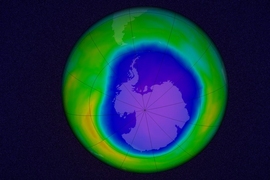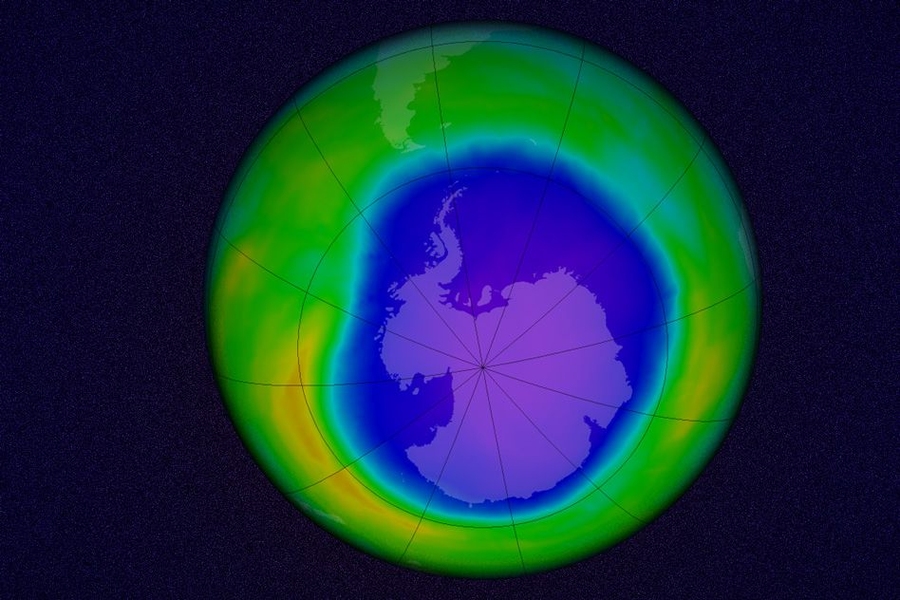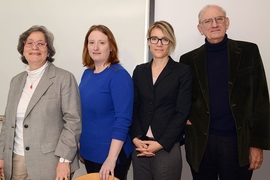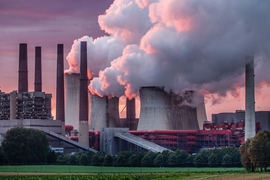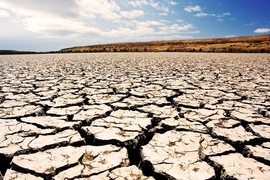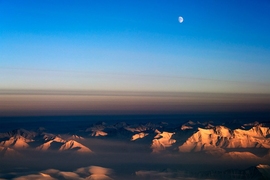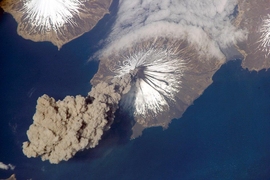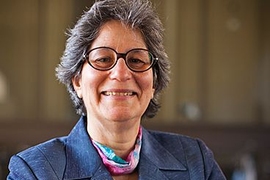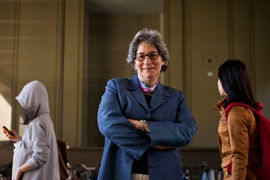Scientists at MIT and elsewhere have identified the “first fingerprints of healing” of the Antarctic ozone layer, published today in the journal Science.
The team found that the September ozone hole has shrunk by more than 4 million square kilometers — about half the area of the contiguous United States — since 2000, when ozone depletion was at its peak. The team also showed for the first time that this recovery has slowed somewhat at times, due to the effects of volcanic eruptions from year to year. Overall, however, the ozone hole appears to be on a healing path.
The authors used “fingerprints” of the ozone changes with season and altitude to attribute the ozone’s recovery to the continuing decline of atmospheric chlorine originating from chlorofluorocarbons (CFCs). These chemical compounds were once emitted by dry cleaning processes, old refrigerators, and aerosols such as hairspray. In 1987, virtually every country in the world signed on to the Montreal Protocol in a concerted effort to ban the use of CFCs and repair the ozone hole.
“We can now be confident that the things we’ve done have put the planet on a path to heal,” says lead author Susan Solomon, the Ellen Swallow Richards Professor of Atmospheric Chemistry and Climate Science at MIT. “Which is pretty good for us, isn’t it? Aren’t we amazing humans, that we did something that created a situation that we decided collectively, as a world, ‘Let’s get rid of these molecules’? We got rid of them, and now we’re seeing the planet respond.”
Solomon’s co-authors include Diane Ivy, research scientist in the Department of Earth, Atmospheric and Planetary Sciences, along with researchers at the National Center for Atmospheric Research in Boulder, Colorado, and the University of Leeds in the U.K.
Signs before spring
The ozone hole was first discovered using ground-based data that began in the 1950s. Around the mid-1980s, scientists from the British Antarctic survey noticed that the October total ozone was dropping. From then on, scientists worldwide typically tracked ozone depletion using October measurements of Antarctic ozone.
Ozone is sensitive not just to chlorine, but also to temperature and sunlight. Chlorine eats away at ozone, but only if light is present and if the atmosphere is cold enough to create polar stratospheric clouds on which chlorine chemistry can occur — a relationship that Solomon was first to characterize in 1986. Measurements have shown that ozone depletion starts each year in late August, as Antarctica emerges from its dark winter, and the hole is fully formed by early October.
Solomon and her colleagues believed they would get a clearer picture of chlorine’s effects by looking earlier in the year, at ozone levels in September, when cold winter temperatures still prevail and the ozone hole is opening up. The team showed that as the chlorine has decreased, the rate at which the hole opens up in September has slowed down.
“I think people, myself included, had been too focused on October, because that’s when the ozone hole is enormous, in its full glory,” Solomon says. “But October is also subject to the slings and arrows of other things that vary, like slight changes in meteorology. September is a better time to look because chlorine chemistry is firmly in control of the rate at which the hole forms at that time of year. That point hasn’t really been made strongly in the past.”
A healing trend
The researchers tracked the yearly opening of the Antarctic ozone hole in the month of September, from 2000 to 2015. They analyzed ozone measurements taken from weather balloons and satellites, as well as satellite measurements of sulfur dioxide emitted by volcanoes, which can also enhance ozone depletion. And, they tracked meteorological changes, such as temperature and wind, which can shift the ozone hole back and forth.
They then compared their yearly September ozone measurements with model simulations that predict ozone levels based on the amount of chlorine that scientists have estimated to be present in the atmosphere from year to year. The researchers found that the ozone hole has declined compared to its peak size in 2000, shrinking by more than 4 million square kilometers by 2015. They further found that this decline matched the model’s predictions, and that more than half the shrinkage was due solely to the reduction in atmospheric chlorine.
“It’s been interesting to think about this in a different month, and looking in September was a novel way,” Ivy says. “It showed we can actually see a chemical fingerprint, which is sensitive to the levels of chlorine, finally emerging as a sign of recovery.”
The team did observe an important outlier in the trend: In 2015, the ozone hole reached a record size, despite the fact that atmospheric chlorine continued to drop. In response, scientists had questioned whether any healing could be determined. Going through the data, however, Solomon and her colleagues realized that the 2015 spike in ozone depletion was due primarily to the eruption of the Chilean volcano Calbuco. Volcanoes don’t inject significant chlorine into the stratosphere but they do increase small particles, which increase the amount of polar stratospheric clouds with which the human-made chlorine reacts.
“Why I like this paper so much is, nature threw us a curveball in 2015,” says Ross Salawitch, professor of chemistry and biochemistry at the University of Maryland. “People thought we set a record for the depth of the ozone hole in October 2015. The Solomon paper explains it was due to a specific volcanic eruption. So without this paper, if all we had was the data, we would be scratching our heads — what was going on in 2015?”
As chlorine levels continue to dissipate from the atmosphere, Solomon sees no reason why, barring future volcanic eruptions, the ozone hole shouldn’t shrink and eventually close permanently by midcentury.
“What’s exciting for me personally is, this brings so much of my own work over 30 years full circle,” says Solomon, whose research into chlorine and ozone spurred the Montreal Protocol. “Science was helpful in showing the path, diplomats and countries and industry were incredibly able in charting a pathway out of these molecules, and now we’ve actually seen the planet starting to get better. It’s a wonderful thing.”
This research was supported, in part, by the National Science Foundation and the U.S. Department of Energy.
